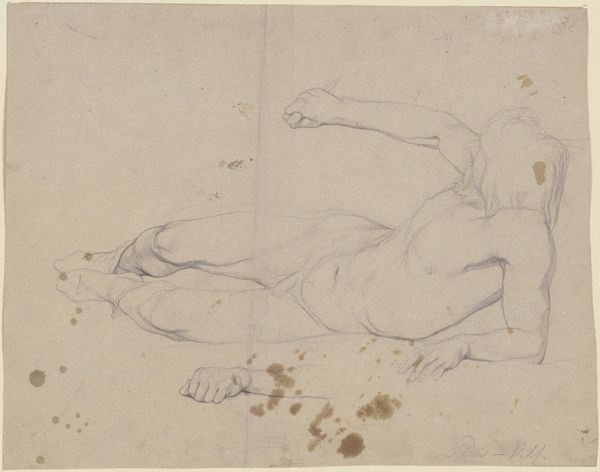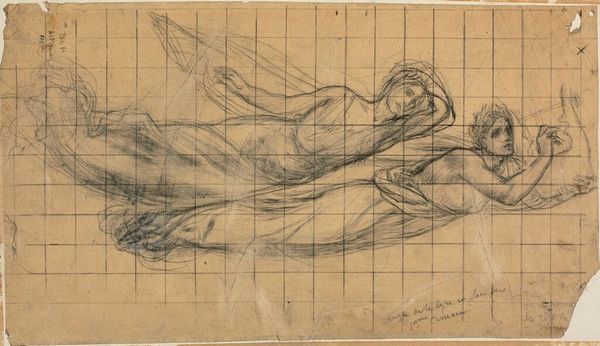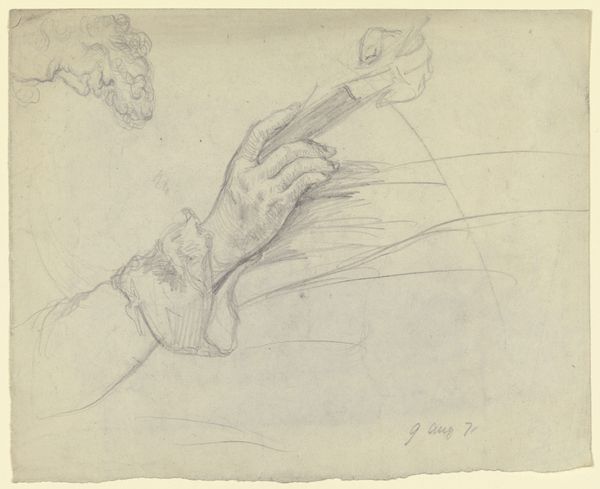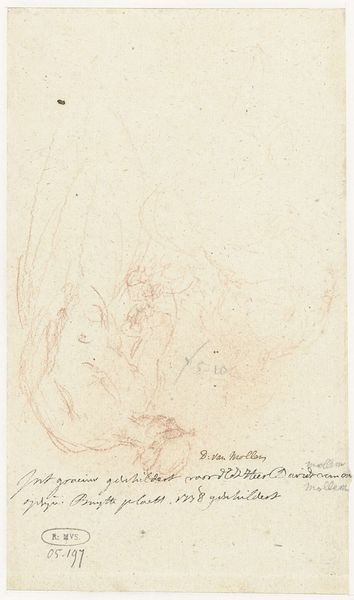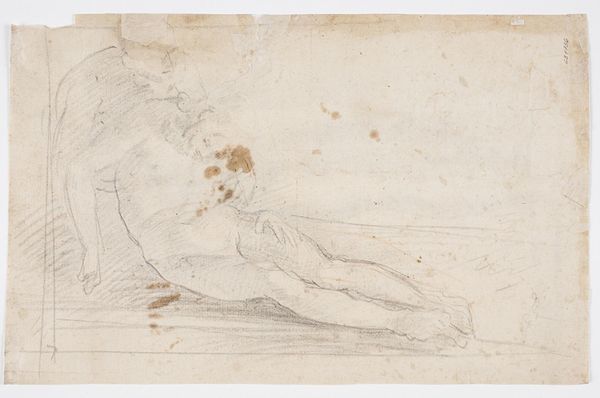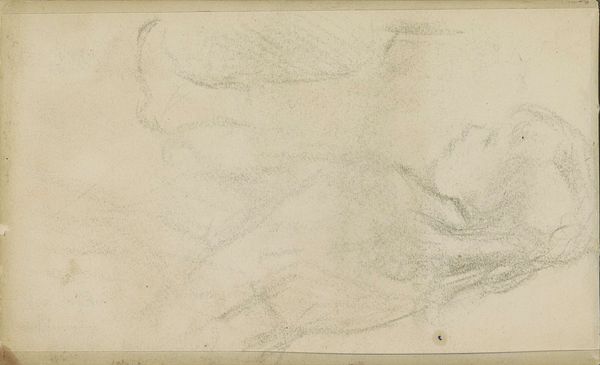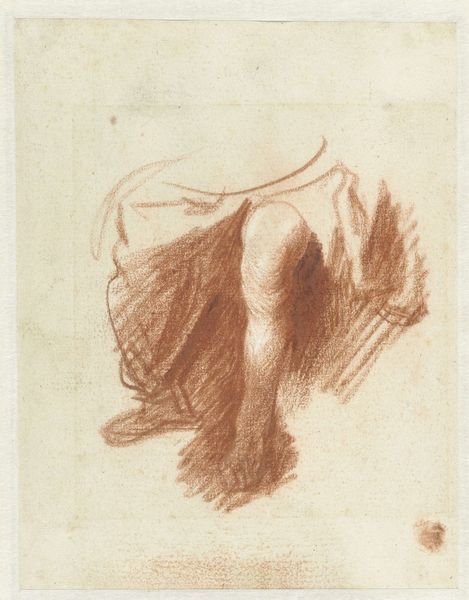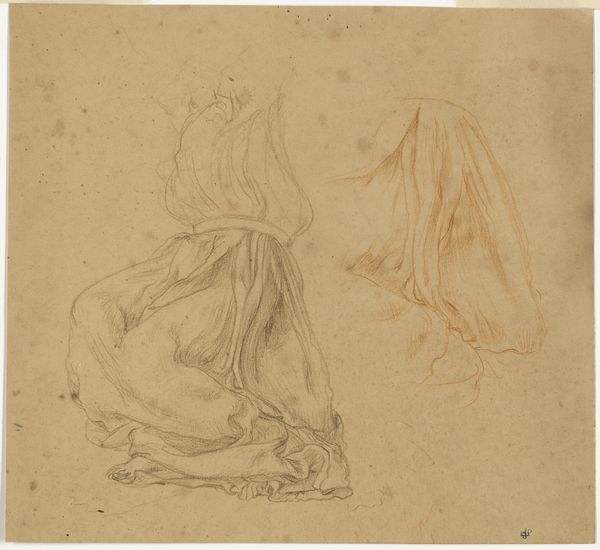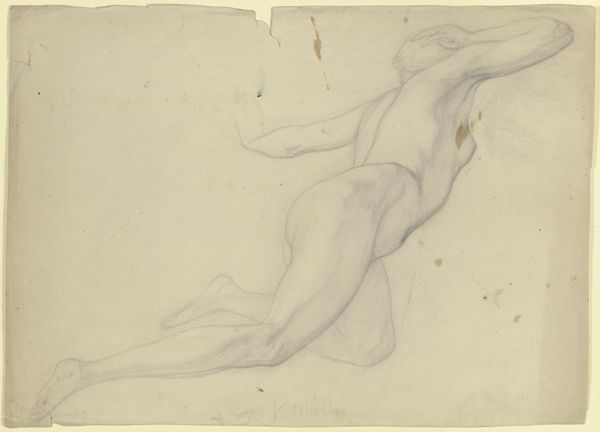
drawing, paper, pencil
#
drawing
#
baroque
#
etching
#
figuration
#
paper
#
pencil
#
history-painting
#
academic-art
Dimensions: height 207 mm, width 224 mm
Copyright: Rijks Museum: Open Domain
Pompeo Batoni created this drawing of a reclining river god using chalk. At first glance, you might notice the squared grid underlying the figure, a common practice for transferring or scaling up a composition. The reddish-brown chalk gives a warm tone to the classical subject. Consider how Batoni uses line and form to convey the muscularity and weight of the figure. The composition is cleverly structured, with the river god's body diagonally spanning the pictorial space. This not only creates a dynamic visual tension, but also guides the viewer's eye from the head, down the torso, to the legs. The figure's relaxed pose is contrasted by the staff, adding a sense of latent power. Notice the areas where Batoni has used hatching and cross-hatching to model the form, giving volume and depth. The drawing isn't just a study of anatomy, but also an exploration of how classical forms can be re-imagined through the language of line and shading. It stands as an exercise in how form communicates meaning, inviting continuous reinterpretation across time.
Comments
No comments
Be the first to comment and join the conversation on the ultimate creative platform.
